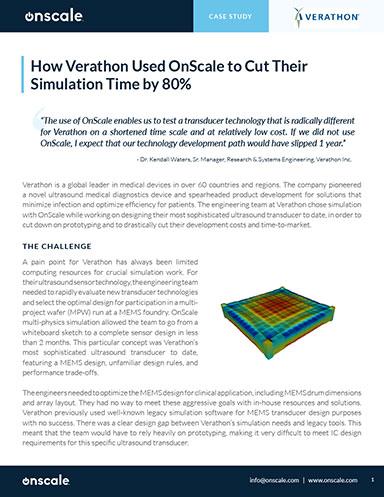The Rise of Human-Interfacing Medical Sensors
Latest News
August 1, 2018
 We’ve entered an era in which the internet of things, the age of big data and rising medical costs have joined forces to compel the healthcare industry to rethink the patient care model. This convergence has, in turn, prompted the introduction of a new generation of sensors and medical devices based on flexible hybrid electronics (FHE), a technology that delivers distinctive physical properties, form factors and functionality.
We’ve entered an era in which the internet of things, the age of big data and rising medical costs have joined forces to compel the healthcare industry to rethink the patient care model. This convergence has, in turn, prompted the introduction of a new generation of sensors and medical devices based on flexible hybrid electronics (FHE), a technology that delivers distinctive physical properties, form factors and functionality.
Proponents of FHE contend that the technology enables the healthcare industry to leverage personal medical data, shifting diagnostic assets from doctors’ offices and hospitals to the patient and the home. By conforming to various body profiles, wearable and human-interfacing medical sensors and diagnostic devices promise to deliver greater insight and enhance the quality of healthcare.
Just Getting Started
FHE-based medical sensors and diagnostic devices are relatively new to the market, with many providers still in the limited-production phase. For example, Tekscan (tekscan.com) has developed a force sensor built between two polyester film substrate layers. The company has introduced a high-temperature version of the sensor constructed with two polyamide layers and a conductive silver layer, followed by a layer of pressure-sensitive ink. The sensing area takes the form of a silver circle that sits on top of the pressure-sensitive ink.
Another example is the flexible epidermal biosensing system being developed by startup Biolinq (biolinq.me). The company says the system will determine a wearer’s dehydration level. Built on a substrate measuring 7x40 mm, the sensor consists of a printed/flexible electromechanical sweat-sensing device that coexists on the unit with several other flexible sensors. The system promises to assist users in determining the quantity and chemical composition of the fluids the user must ingest to avoid dehydration problems.
Flexibility Has Its Advantages
FHE-based sensors boast numerous selling points, most of which can be summed up as enabling better data collection. Foremost, flexible sensing devices that conform closely to the patient’s skin improve data transmission and accuracy. In addition, these sensors often sport small, thin form factor. As a result, they are more comfortable to wear and more likely to remain in place. These factors help ensure a continuous data stream from the patient.
Another advantage is that these flexible platforms can support multiple sensors, enabling the correlation of data from various sources. These promise to yield insights unattainable with single-sensor systems. For example, research has shown that by examining heart rate and body temperature, healthcare professionals can more accurately predict susceptibility to certain types of viruses.
One example is the flexible sensor developed at the University of California, Berkeley, that provides continuous data streams and enables real-time analysis of the chemicals in sweat. The sensor platform can detect glucose, lactate, sodium, potassium and body temperature. Using this data, the system could trigger an alarm, indicating that medication is needed or that the user is becoming dehydrated.
In addition to promising improved data collection, the technology’s fabrication process removes barriers that have precluded the use of certain materials. FHE assembly can take place at temperatures below 100˚C. As a result, sensors can include components that cannot survive traditional electronics assembly processes, which typically operate around 230˚C. This opens the door for sensor manufacturers to include biomaterials, such as bacteriophages and certain proteins, allowing the creation of entirely new types of sensors.
Remaining Hurdles
With these features, FHE-based sensors are well-positioned to make significant contributions in the healthcare arena, but many issues still must be resolved.
One challenge facing designers is to balance requirements for onboard signal processing, data processing and communications circuitry along with the need to keep the sensor thin and flexible.
Additionally, FHE providers must reduce the cost of their products. One way to do that is through roll-to-roll manufacturing. Unfortunately, relatively few inks have been formulated for high-speed printing, and those that are available often require high deposit thicknesses and are relatively slow to dry.
Subscribe to our FREE magazine, FREE email newsletters or both!
Latest News






